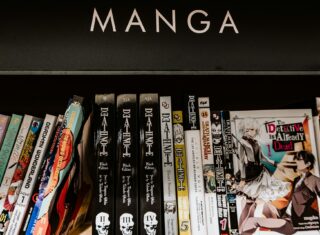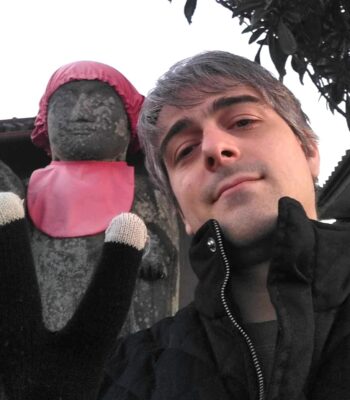- Japanese Culture
An Introduction to Japanese Tea Ceremony for Western Audiences: Learn Basic Etiquette for Beginners!
2025.04.12
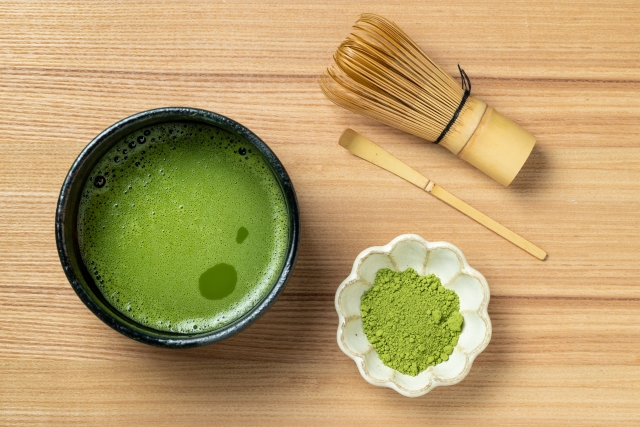
Have you ever thought to yourself, “I’d love to try the Japanese tea ceremony, but I’m not really sure how it works…”?
You’re not alone! A lot of people feel that way—tea ceremony often seems formal or intimidating at first glance. But let me tell you: once you understand just a few key points—like the basic etiquette and the spirit behind it—it opens up a whole new world of joy and discovery. It’s not just about drinking tea; it’s a chance to step right into the heart of Japanese culture.
A little while ago, I had the absolute pleasure of taking a group of my students—about 17 of them—to experience tea ceremony together in Kyoto. Most of them were trying it for the first time, and yes, they were a bit nervous at first. But once we started, they got into the rhythm of it and really enjoyed the temae (tea preparation). You could see it on their faces— completely immersed in the art, mindfulness, and fun of it, almost to the point where they forgot where they were. It was truly unforgettable.
Tea ceremony may seem stiff or rigid from the outside, but once you experience it for yourself, you'll find it’s actually deeply calming, incredibly warm, and quietly powerful. If you ever get the chance, I really hope you give it a try!
In this article, I’ll walk you through what tea ceremony is all about, the important spirit that underlies it, and the key manners to keep in mind.
Plus, I’ll also show you the different tools used in tea ceremony, how to make matcha at home, and where in Japan you can actually try a tea ceremony for yourself! I hope it inspires you to explore this beautiful corner of Japanese tradition.
What Is Japanese Tea Ceremony?
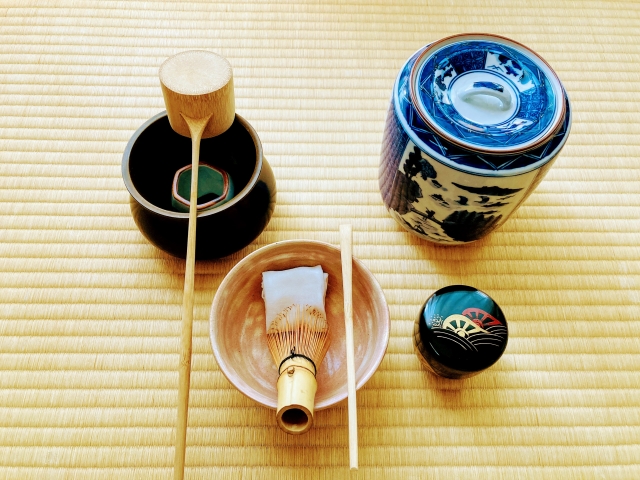
Japanese tea ceremony refers to the traditional cultural practice in which a host prepares and serves tea to guests following established customs. The guest receives the tea as a form of hospitality.
The purpose of tea ceremony is not simply to drink tea; rather, it lies in the spiritual interaction between the host and the guest. Therefore, it is important to enjoy the tea while sensing the spirit of hospitality and consideration.
Additionally, tea ceremony represents a rich cultural experience that combines unique etiquette, tea room aesthetics, tea utensils, and traditional sweets—a blend of various artistic elements that can’t be experienced elsewhere.
History of Japanese Tea Ceremony
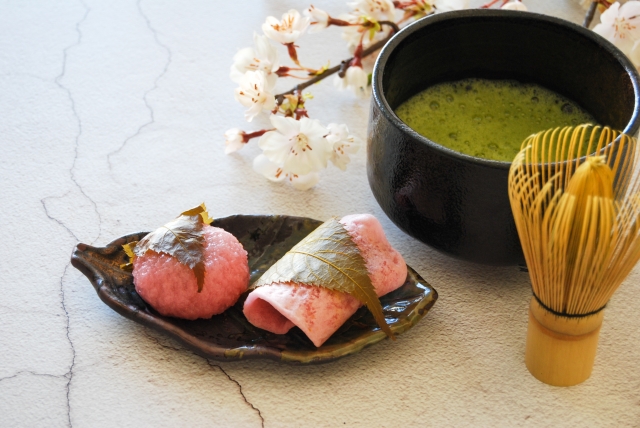
The history of Japanese tea ceremony is long. The oldest known record appears in the early Heian period history text Nihon Kōki, which mentions that a monk named Eichū prepared and offered tea to the emperor.
At the time, tea was a rare and valuable item, so tea culture was limited to the upper classes. However, in the Kamakura period, matcha began to spread in Japan.
This development is attributed to the monk Eisai, who brought the Rinzai school of Zen Buddhism to Japan and also introduced matcha, which had become popular in Zen temples of the Song dynasty in China.
Matcha became popular in Zen temples because the high caffeine content helped suppress drowsiness during the intense discipline of Zen training, and it was used as a kind of medicine.
For this reason, Japanese tea ceremony and Zen Buddhism have a historically deep connection.
★Also try reading:
11 Essential Books to Understand Japanese History – A Guide for Western Readers
Important Values in Japanese Tea Ceremony
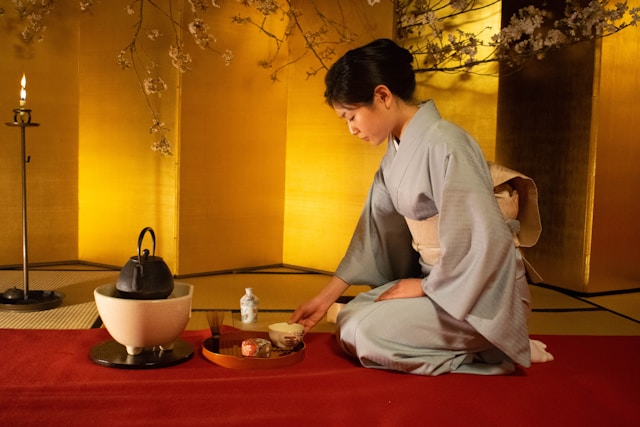
There are two primary values that are considered important in Japanese tea ceremony:
- Wa-Kei-Sei-Jaku (和敬清寂)
- Rikyū's Seven Rules (利休七則)
- Ichigo Ichie (一期一会)
Below, we will explain the two values listed above that are essential to the tea ceremony.
Wa-Kei-Sei-Jaku (和敬清寂)
Wa-Kei-Sei-Jaku is the spiritual foundation of the tea ceremony, advocated by Sen no Rikyū, who is considered the founder of the Japanese tea ceremony. It is a collective term referring to the following four principles:
|
Term |
Meaning |
|
Wa (Harmony) |
The host and guests maintain a comfortable and harmonious atmosphere |
|
Kei (Respect) |
Both parties interact with a spirit of mutual respect |
|
Sei (Purity) |
One purifies oneself by removing inner impurities |
|
Jaku (Tranquility) |
One cultivates inner calmness to remain unshaken |
These represent the core spirit of tea ceremony, so it is important to keep these attitudes in mind when learning about tea ceremony.
Rikyū’s Seven Rules (利休七則)
Rikyū’s Seven Rules refer to the following seven guidelines taught by Sen no Rikyū:
|
Guideline |
Meaning |
|
1. Tea should be served so it is easy to drink |
Prepare tea with care so that it can be enjoyed deliciously |
|
2. Place the charcoal so the water boils properly |
Arrange the charcoal thoughtfully so the water heats as planned |
|
3. Arrange flowers as they are in the field |
Naturally growing flowers are the most beautiful |
|
4. In summer, provide coolness; in winter, warmth |
Adapt your hospitality to match the seasons |
|
5. Be punctual |
Act ahead of time so as not to waste the guest’s valuable time |
|
6. Prepare for rain even if it’s not forecast |
Always be ready to act calmly no matter the situation |
|
7. Be considerate of other guests |
Show mutual respect and spend an enjoyable time together |
These seven rules are the fundamentals of tea ceremony. They are also seven essential points for beginning the practice with a heart of hospitality.
Ichigo Ichie (一期一会)
Ichigo Ichie is one of the key philosophies valued in the world of tea ceremony. It means “once-in-a-lifetime encounter.” Even with someone you’re close to, the exact same moment will never occur again—therefore, it is important to treasure each meeting and face it with sincerity and mindfulness.
|
Item |
Content |
|
Meaning |
The idea of “a once-in-a-lifetime encounter.” Since no tea gathering can ever be repeated in exactly the same way, it’s important to face those present with sincerity. |
|
Background |
A concept cherished by Sen no Rikyū as a core philosophy of tea ceremony. In a tea gathering, the relationship between the host and the guest is treated as special, and both parties are expected to engage with sincerity and respect. |
|
Related Concepts |
- Wa-Kei-Sei-Jaku: The core spirit of the tea ceremony, valuing harmony and mutual respect. - Mujō (Impermanence): A Buddhist belief that all things are in constant change. |
|
Practical Application in Tea Ceremony |
- The host offers heartfelt hospitality at every tea gathering. - The guest expresses gratitude and treats each action with care and respect. |
Tools Used in Tea Ceremony
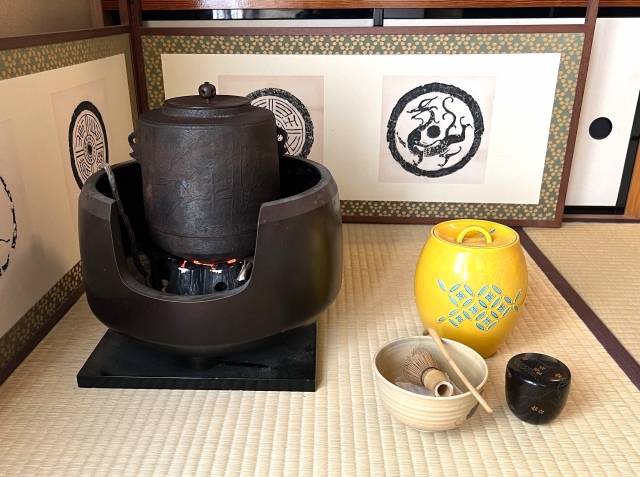
The following are examples of tools used in Japanese tea ceremony:
|
Tool Type |
Features |
|
Chawan (Tea Bowl) |
A vessel for drinking matcha. There are various shapes, sizes, and designs depending on the season or tea school. Bowls with wider mouths are preferred in summer, while deeper ones are used in winter. |
|
Natsume |
A lacquered container for storing matcha powder. Named after its resemblance to the natsume (jujube) fruit. Often used for thin tea (usucha), while ceramic tea caddies are used for thick tea (koicha). |
|
Chashaku (Tea Scoop) |
A slender bamboo tool used to scoop matcha into the tea bowl. One scoop is typically the amount for a bowl of thin tea. There are various shapes and designs depending on the tea school, and some tea masters even craft their own. |
|
Mizusashi (Fresh Water Container) |
A vessel for storing water used to rinse the tea bowl or tea whisk. Often ceramic or metal, and usually lidded during the tea gathering. Proper water management is crucial in tea ceremony. |
|
Hishaku (Ladle) |
A bamboo ladle used to draw water from the kettle or mizusashi. Different lengths are used depending on the tea school or the style of temae (procedure). |
|
Kama / Chagama (Iron Kettle) |
An iron kettle used for boiling water. Paired with either a hearth (for winter) or brazier (for summer). There are many types, such as the “Fuji-gama” favored by Sen no Rikyū. |
|
Fukusa (Silk Cloth) |
A silk cloth used to purify utensils like the chashaku or natsume. Purple is common for men, and red or vermillion for women. Graceful handling of the fukusa is essential in the tea procedure. |
|
Chasen (Tea Whisk) |
A bamboo whisk used to blend and froth the matcha with hot water. Variants exist in the number of prongs (e.g., light vs. dense), and different types are used for thin and thick tea. |
|
Sensu (Folding Fan) |
A tool used for greetings and formal etiquette. A special, smaller “tea fan” (chasensu) is used in the tea room and placed on the tatami mat during polite exchanges. |
|
Kaishi (Paper Napkins) |
Paper used in place of a plate when eating sweets. Also used for wiping one’s mouth or for writing notes. Women generally carry several sheets with them. |
All of the above tea utensils can be purchased at Japanese tea specialty shops, where the staff can help select tools suited to your tea school or tradition.
Etiquette in Tea Ceremony
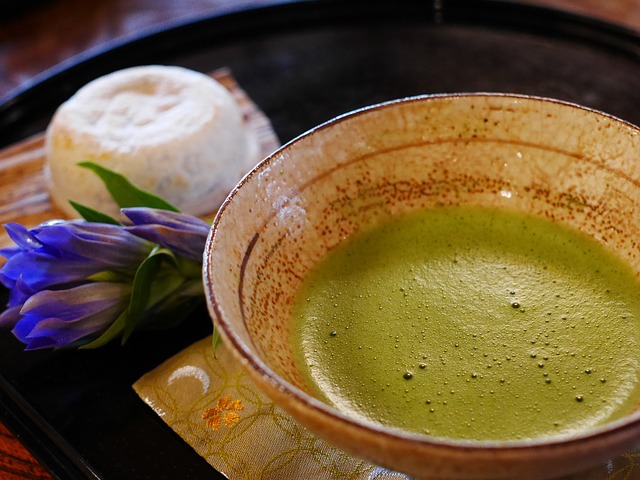
There are four main categories of etiquette in tea ceremony:
- Dress etiquette
- Points to observe when entering the room
- How to drink tea
- How to eat sweets
Below, we’ll explain each of these four types of etiquette in detail.
Dress Etiquette
When it comes to tea ceremony, you might imagine that “you must wear a kimono,” but in modern Japan, it is perfectly acceptable to wear clean and modest clothing even if it’s not traditional.
For men, a suit and simple tie are appropriate. For women, office-casual attire is recommended, while avoiding flashy nail art or accessories. Long hair should be tied back.
Additionally, wearing white socks is important in tea ceremony attire, as it symbolizes clearing the mind of distractions.
Points to Observe When Entering the Room
Key points to observe when entering the tea room:
- Enter in the order of: Shōkyaku (main guest), Jikyaku (next guest), then Matsukyaku (last guest)
- Say “Shitsurei shimasu” (“Excuse me”) as you enter
The Shōkyaku (main guest) acts as the representative of the guests and is expected to express impressions of the tea, so this role is typically given to someone with experience in tea ceremony.
The Jikyaku (next guest) assists the main guest, and may handle returning the utensils.
Because of this, beginners usually enter after the shōkyaku and jikyaku, and it is proper etiquette to say “Shitsurei shimasu” upon entering the room.
How to Drink Tea
Follow these steps to drink tea with proper etiquette:
- When the tea is served, say “Osaki ni” (“Allow me to go ahead”) to the person next to you
- Say “Chōdai itashimasu” to the host
- Pick up the tea bowl with your right hand and place it on your left palm
- Rotate the bowl twice to avoid drinking from the front, especially if it has a decorative design
- After the first sip, say “Kekkō na otemae de” (a polite phrase expressing appreciation for the tea)
- Finish drinking in three and a half sips
- Wipe the rim of the bowl with your right thumb and index finger
- Wipe your fingers using a kaishi (paper napkin)
- Return the bowl with the decorated front facing the host
It might feel unfamiliar at first, but take your time and perform each step slowly and carefully.
How to Eat Sweets
Follow these steps to eat sweets with proper etiquette:
- Wait for the host to bring the sweets, and take one after being told “Kashi o dōzo” (“Please enjoy the sweets”)
- Say “Osaki ni” to the person next to you
- Pick up the sweets tray, bow slightly, and transfer one of each type of sweet onto your kaishi paper
- Use a yōji (small pick) to cut the sweet into two or three pieces and lightly pierce to eat it (dry sweets may be eaten by hand)
Be sure to finish the sweets before drinking the tea, while keeping these steps in mind.
Want to Enjoy Tea Ceremony at Home? How to Prepare Matcha
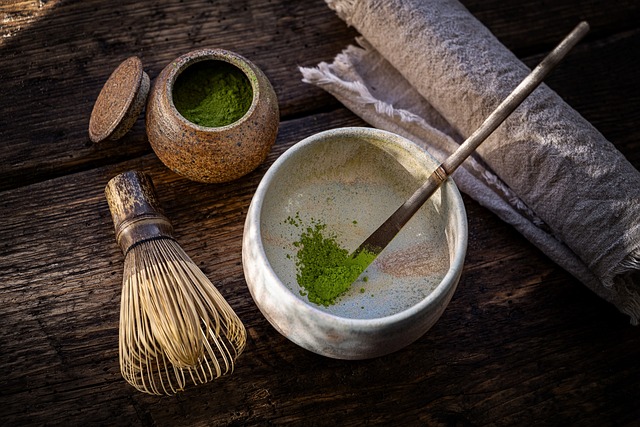
If you’d like to enjoy tea ceremony at home, here’s how to prepare matcha!
- Place the chasen (bamboo whisk) into the chawan (tea bowl) and pour in hot water to warm the tools
- Discard the water and add two scoops of matcha (using a chashaku) into the tea bowl
- Pour 60–70ml of hot water (at about 80–90°C) into the bowl
- Using the chasen, whisk in a motion that traces the letter “m”, making sure not to touch the bottom of the bowl
- Once a fine, creamy layer of froth forms on the surface, it’s complete
If the matcha forms lumps when added to the bowl, add a small amount of cold water first to mix and smooth it out, then pour in the hot water for a better finish.
Differences Between Tea Ceremony Schools
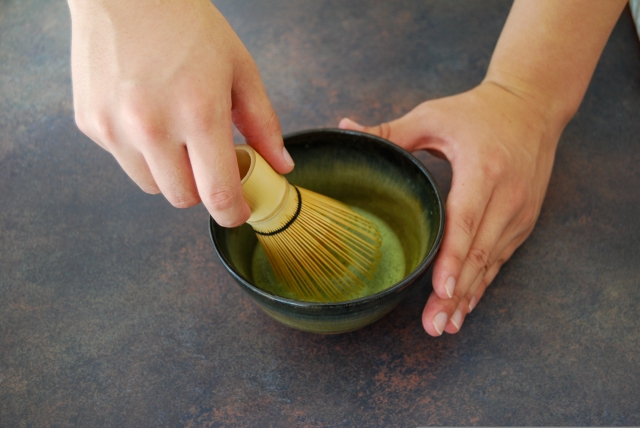
The main schools of tea ceremony are collectively known as the San-Senke (Three Sen Families): Omotesenke, Urasenke, and Mushanokōji-senke. They differ in the following aspects:
- Which foot steps into the tea room first and the number of steps taken
- The angle of the bow and the manner of sitting
- The color of the fukusa (silk cloth used for purifying utensils)
- The type of chasen (tea whisk) used
- The degree of froth in the tea
- The types of sweets served
All three schools trace their origins back to Sen no Rikyū, but were passed down through his descendants and eventually branched into three distinct lineages. These schools are characterized by their subtle differences in the points listed above.
Where to Experience Tea Ceremony in Japan

There are many places in Japan where you can experience tea ceremony, including opportunities to make your own tea or even try traditional wagashi (Japanese sweets) making!
Especially in popular tourist areas like Asakusa in Tokyo or Kyoto, you’ll find various shops offering tea ceremony experiences to introduce visitors to Japanese culture. It's best to look up these places in advance and make reservations online before your visit.
You may also find tea ceremony experiences at Japanese gardens or local cultural centers, so try searching for a location that suits your preferred atmosphere and make a reservation.
If you're unsure where to go, feel free to ask Oku Sensei—she may be able to recommend a great place and share some helpful tips!
★Also try reading:
19 Useful Japanese Phrases for Travel: Try Using Them in Different Situations!
Summary: Introduction to Japanese Tea Ceremony
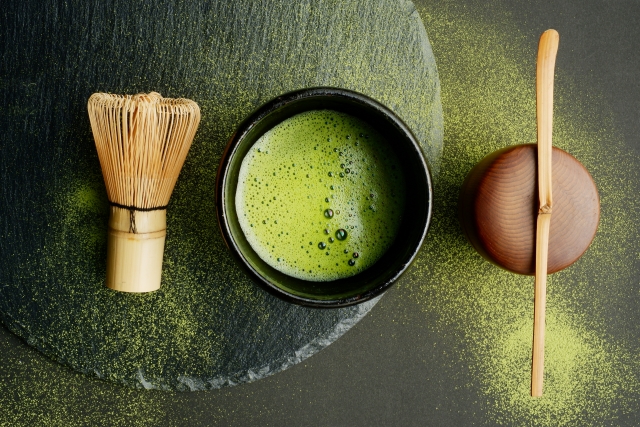
When experiencing Japanese tea ceremony, be sure to keep in mind the essential principles and etiquette introduced in this article.
If tea ceremony has sparked your interest in Japanese culture or the Japanese language, why not dive deeper with online lessons from Oku Sensei’s Japanese?
At Oku Sensei’s Japanese, you can enjoyably learn practical and useful Japanese in a way that fits your needs. It’s perfect for those who have:
- Tried learning Japanese through apps but struggled to improve
- Attended language schools but didn’t make the progress they hoped for
- Wanted to learn natural Japanese while also learning about Japanese culture
Right now, Oku Sensei’s Japanese is offering a free 30-minute consultation, so be sure to check it out!




